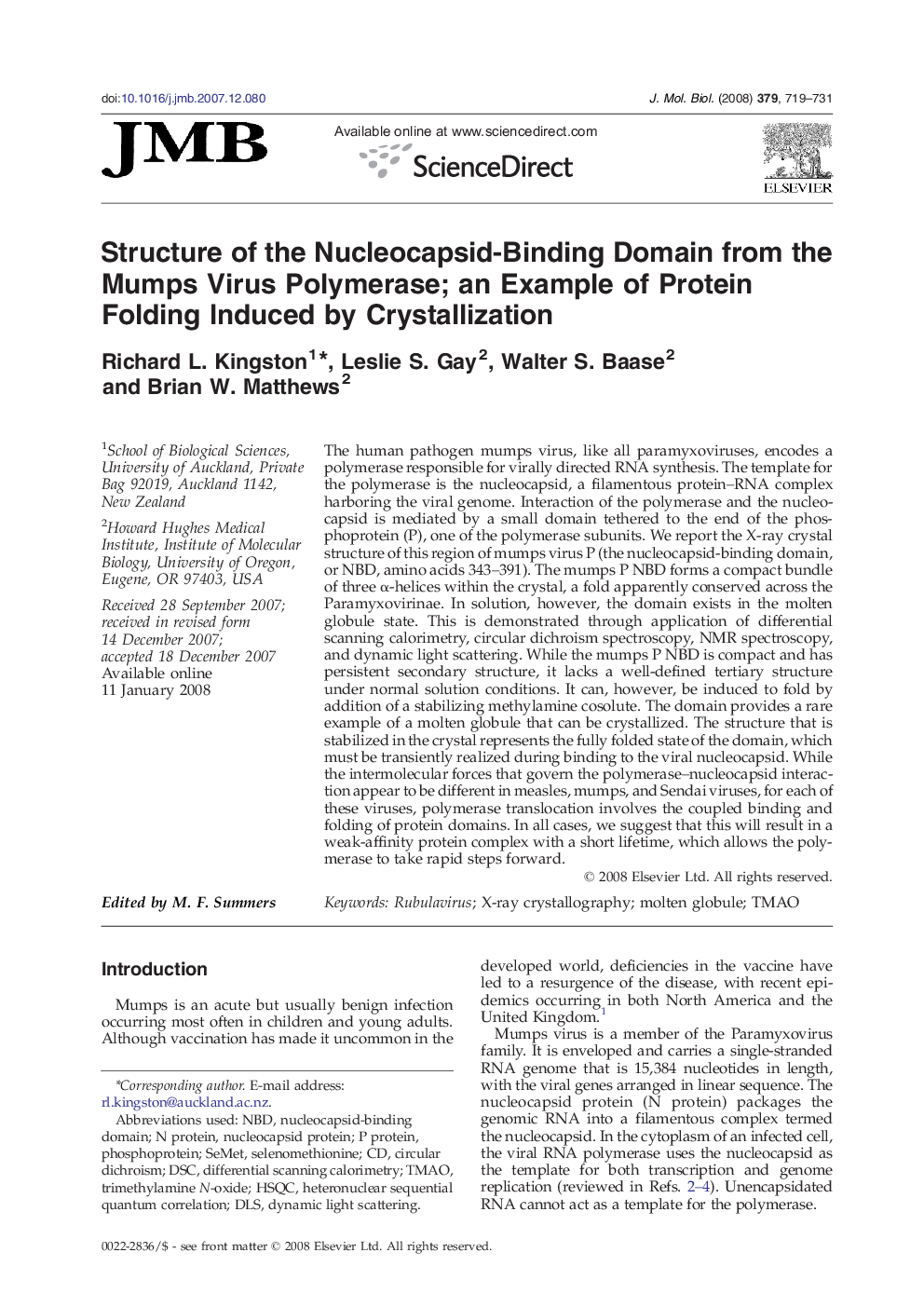| کد مقاله | کد نشریه | سال انتشار | مقاله انگلیسی | نسخه تمام متن |
|---|---|---|---|---|
| 2187413 | 1096116 | 2008 | 13 صفحه PDF | دانلود رایگان |

The human pathogen mumps virus, like all paramyxoviruses, encodes a polymerase responsible for virally directed RNA synthesis. The template for the polymerase is the nucleocapsid, a filamentous protein–RNA complex harboring the viral genome. Interaction of the polymerase and the nucleocapsid is mediated by a small domain tethered to the end of the phosphoprotein (P), one of the polymerase subunits. We report the X-ray crystal structure of this region of mumps virus P (the nucleocapsid-binding domain, or NBD, amino acids 343–391). The mumps P NBD forms a compact bundle of three α-helices within the crystal, a fold apparently conserved across the Paramyxovirinae. In solution, however, the domain exists in the molten globule state. This is demonstrated through application of differential scanning calorimetry, circular dichroism spectroscopy, NMR spectroscopy, and dynamic light scattering. While the mumps P NBD is compact and has persistent secondary structure, it lacks a well-defined tertiary structure under normal solution conditions. It can, however, be induced to fold by addition of a stabilizing methylamine cosolute. The domain provides a rare example of a molten globule that can be crystallized. The structure that is stabilized in the crystal represents the fully folded state of the domain, which must be transiently realized during binding to the viral nucleocapsid. While the intermolecular forces that govern the polymerase–nucleocapsid interaction appear to be different in measles, mumps, and Sendai viruses, for each of these viruses, polymerase translocation involves the coupled binding and folding of protein domains. In all cases, we suggest that this will result in a weak-affinity protein complex with a short lifetime, which allows the polymerase to take rapid steps forward.
Journal: Journal of Molecular Biology - Volume 379, Issue 4, 13 June 2008, Pages 719–731